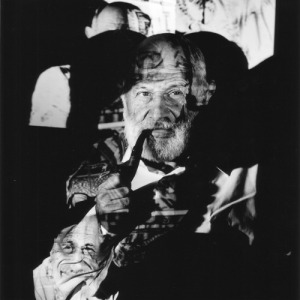The concept of collective writing has, or rather, constitutes a problem. This is a good thing – because to occupy ourselves with a problem is to learn its possibilities, to be endless apprentices to its teaching (Deleuze, 1994). It is not a new problem; it is as old as writing itself. But it can be made new again if we ask the right questions.
When we write collectively, we ask: What collective? The writers who press the keys to find out what they think and trade thoughts with each other? The writers along with their lines of writing and non-writing forebears? Or the apparatus of humans, computers, concepts, ‘data,’ living and dead things human and more-than-human that we might call a writing ecology and that is brought into being in the tangle of affects, percepts and concepts that writing brings into existence (see Morton, 2010)?
And when we write collectively, do we not also ask: What writing? Writing as text – or encoding – or ‘composition’ (Wyatt et al., 2011)? Writing as expository or expressive? Writing as finished (writ) or always unfinished (writerly)? Writing as like non-collective writing, but with someone – or something – else? Or writing as the writing-into-existence of a – or the – collective?
Now that the work of describing for ourselves the malfunction of the scholarly apparatus that is collective writing is underway – signalled by the language of education, research, review, science, knowledge, publishing, journals, universities, culture, works, authors and peers, not to mention technology and digitisation – maybe we can learn to write in ways that keep open the questions that writing poses. Maybe we can let human writers merge with more-than-human writers such that collective existences emerge. Maybe we can take this way of thinking as a prompt (or plea?) to talk less with ourselves and more with others, so to speak, to take writing to be ecological (Deleuze, 2000).
From Peters, M. A., Tesar, M., Jackson, L., Besley, T., Jandrić, P., Arndt, S., & Sturm, S. (2020). Exploring the philosophy and practice of collective writing. Educational Philosophy and Theory. https://doi.org/10.1080/00131857.2020.1854731
Deleuze, G. (2000). The three ecologies (I. Pindar & P. Sutton, Trans.). New Brunswick, NJ: Athlone Press.
—. (1994). Difference and repetition (P. Patton, Trans.). New York, NY: Columbia University Press.
Morton, T. (2010). Ecology as text, text as ecology. Oxford Literary Review, 32(1), 1–17. https://doi.org/10.3366/olr.2010.0002
Wyatt, J., Gale, K., Gannon, S., & Davies, B. (2011). Deleuze and collaborative writing: An immanent plane of composition. New York, NY: Peter Lang.





